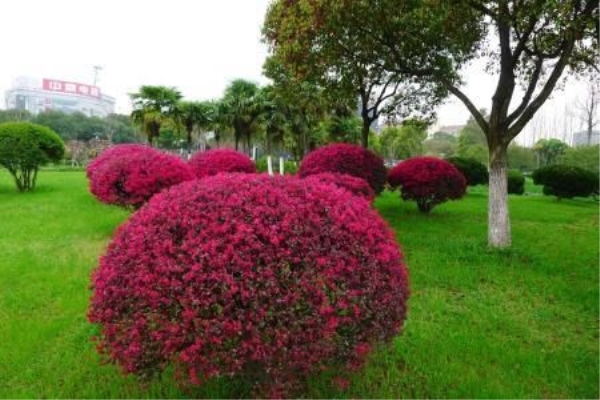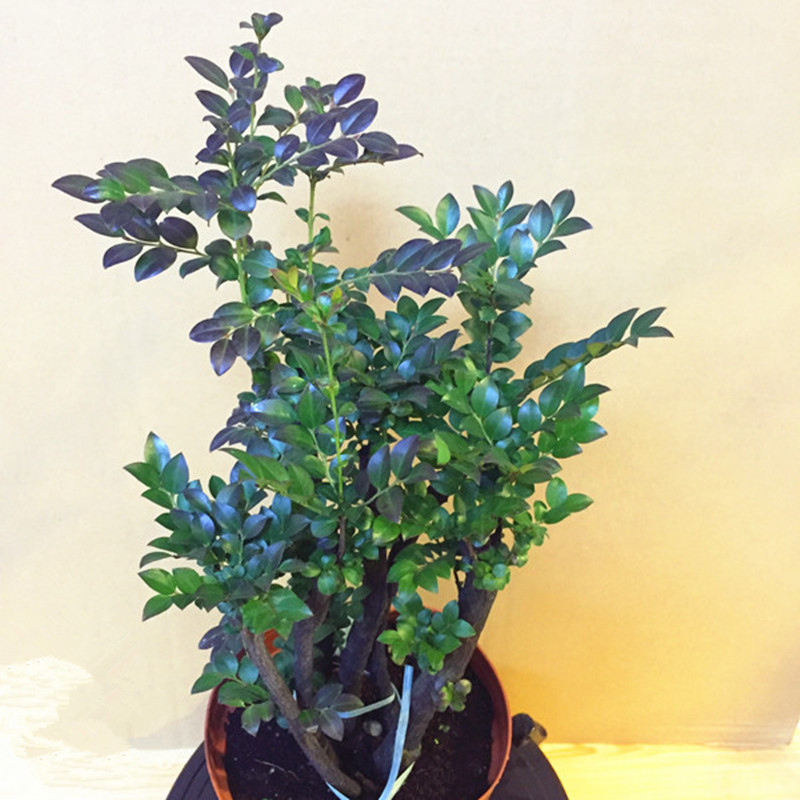Matters needing attention in the cultivation of Gardenia jasminoides
1. Pay attention to avoid yellowing of leaves.
Light is a very important factor in the growth of Fructus Gardeniae. The light is suitable in the spring and autumn season, and you can receive direct sunlight outside. When it is hot in summer, when the sun is strong, you can make a shade to block out the sun. In winter, the outdoor temperature is low, the lobular gardenia pot must be moved into the indoor sunny place for maintenance, and ensure that the indoor temperature is above 15 degrees.
2. Pay attention to diseases and insect pests.
Leaflet gardenia is very prone to disease is leaf spot, generally from winter to spring this stage is easy to occur, so usually pay attention to observation, once found that sick leaves should be pruned in time to prevent the disease from affecting other leaves.
The main pests of Gardenia jasminoides are aphids, jumping beetles and diamondback moth larvae. Aphids and jumping beetles can be sprayed with trichlorfon and other insecticidal drugs, and diamondback moth larvae can be sprayed and controlled with 666 powder or caught by hand.

The lobular gardenia in the north is usually introduced from the south and is usually transplanted with soil. When friends in the northern region are breeding, they can store some Rain Water to water the potted plants in the rainy season, so as to avoid the alkalization of potted soil and better cultivate lobular gardenia. Thank you for your reading.
Culture method of Gardenia jasminoides L. soil.
Lobular gardenia is usually planted in a pot for ornamental, so breeding lobular gardenia, potted soil is very important. Lobular gardenia is suitable for slightly acidic soil with good loose drainage, so rotten leaf soil or fertile peat soil can be selected for cultivation.
2. Light.
Gardenia is a sunny plant, and lobular gardenia is no exception. When cultivating lobular gardenia, the potted plants should be cultured in a sunny and ventilated place, which can ensure that the lobular gardenia can receive enough light, make the leaves greener and bloom better.
3. Watering.
The lobular gardenia likes the warm and humid environment, the lobular gardenia should pay attention to timely watering during the growth process, and the leaves can also be sprayed with water mist during the high temperature in summer, which helps the leaves to absorb water and increase their brightness. It is necessary to reduce the amount of water in winter to prevent rotting roots. At the same time, the watering time of lobular gardenia is usually during the day, and avoid watering at night.
4. Fertilizer.
The need for fertilizer in the growth process of lobular gardenia is relatively large, especially in the vigorous growth season, bean cake, sesame sauce dregs and peanut bran should be applied every half a month, which can help lobular gardenia blossom more and bloom.
After talking about the breeding methods of small gardenia, let's talk about the matters needing attention in lobular gardenia culture.
Culture methods and points for attention of Gardenia jasminoides
Lobular gardenia is our common flower, the flower is white and beautiful, and exudes a strong fragrance, loved by many friends, the flower language of gardenia is "eternal love, life waiting and joy", and its beautiful appearance complement each other. Lobular gardenia is not only suitable for courtyard flowers, but also suitable for indoor balcony planting, when flowering can smell fragrance far away. And its planting is not particularly complex, can adapt to the harsh environment, as long as ensure enough light and moisture to grow and blossom quickly.
Culture method of lobular gardenia
Plenty of water
Gardenia likes a warm, humid and sunny environment, so it is also very important for water demand and air humidity. During the growth of gardenia, we should pay attention to increasing the amount of water. At the same time, we should also pay attention to spraying some water on the leaves of gardenia, which can improve the humidity of the air. At the same time, we should also pay attention to not watering too much in winter to prevent rotting roots.
Plenty of light time
During the growth period, gardenia should also pay attention to the need for appropriate amount of light. Gardenia is a plant that loves light, so it is suggested that more attention should be paid to increasing the time of light in spring and autumn, while in summer and winter, it is recommended to put indoor culture with the same amount of light to avoid too high or too low temperature during the growth period.
Appropriate amount of fertilization
Replenish the nutrients needed for growth. The demand for nutrients of Gardenia jasminoides is also very high. in order to meet the demand of fertilizer during the growth period of Gardenia jasminoides, it is suggested that bean cake, sesame sauce dregs, peanut bran and other fertilizers should be applied every half a month during the vigorous growth period of Gardenia jasminoides. This is also conducive to more and exuberant flowers.
Pay attention to pruning
Gardenia in the growth period, easy to overlap branches, not ventilated, so during this period, the right amount of pruning, which can also promote growth, cut off other branches sprouted from root tillers.
Soil demand
Gardenia likes to grow in acidic soil, so when buying gardenia soil, we should pay attention to select acidic soil for culture, and at the same time, it is appropriate to control soil pH between 4.0 and 6.5. therefore, the choice of soil is also very important for the needs of culture.
Suitable growth temperature requirement
According to the growth temperature of Gardenia jasminoides, the best growth temperature is 16 ℃-18 ℃, but it should be noted that too high or too low temperature is not conducive to the growth needs of Gardenia jasminoides, so it is recommended to choose a well-ventilated indoor culture in summer and winter, so it is also important for farmers to pay attention to.
Matters needing attention in the culture of gardenia microphylla
(1) Gardenia likes to be fat, but is afraid of thick fertilizer. Generally, the cake fertilizer containing more phosphorus and potassium is applied twice before budding, and the fertilization is stopped after budding. If too much fertilizer is applied, it is easy to burn roots and cause budding.
(2) Gardenia prefers semi-shade, is afraid of strong light, and requires a shade degree of about 50%. If exposed to the sun, the leaves turn yellow and whiten until they fall off, so they should be kept in a shady place or a place with scattered light in summer. Make it see light in the morning and evening to prevent the leaves from yellowing.
Lobular gardenia flowers are relatively dense, if properly cultivated longer flowering period, the flowers will be many very large. Gardenia likes a warm environment, so to ensure the humidity and temperature of the air, it is best to keep it in a sunny place, but to avoid exposure to the sun, it is best to move to a cool place in summer. The branches of the lobular gardenia grow faster, so reasonable construction can also promote the density of flowers. If you master the above knowledge, you will certainly be able to grow lobular gardenias full of fragrance.
- Prev

Matters needing attention in breeding Carthamus tinctorius
When cultivating safflower trees, it is necessary to turn the basin regularly, and the soil can be changed when turning the basin to provide sufficient nutrients for the plant. pay attention to watering thoroughly when putting on the basin. Moreover, Carthamus tinctorius has strong germination and rapid growth, so it needs to be pruned to control the plant type and maintain its high appreciation value.
- Next

The value of lobular red sandalwood bonsai
Lobular red sandalwood is the raw material of mahogany furniture and belongs to scarce resources. Many people will invest in planting lobular red sandalwood. The mature lobular red sandalwood has a remarkable reputation and has a very high market valuation. As a flower lover, if only for watching lobular red sandalwood, it is a well-deserved first choice.
Related
- Fuxing push coffee new agricultural production and marketing class: lack of small-scale processing plants
- Jujube rice field leisure farm deep ploughing Yilan for five years to create a space for organic food and play
- Nongyu Farm-A trial of organic papaya for brave women with advanced technology
- Four points for attention in the prevention and control of diseases and insect pests of edible fungi
- How to add nutrient solution to Edible Fungi
- Is there any good way to control edible fungus mites?
- Open Inoculation Technology of Edible Fungi
- Is there any clever way to use fertilizer for edible fungus in winter?
- What agents are used to kill the pathogens of edible fungi in the mushroom shed?
- Rapid drying of Edible Fungi

